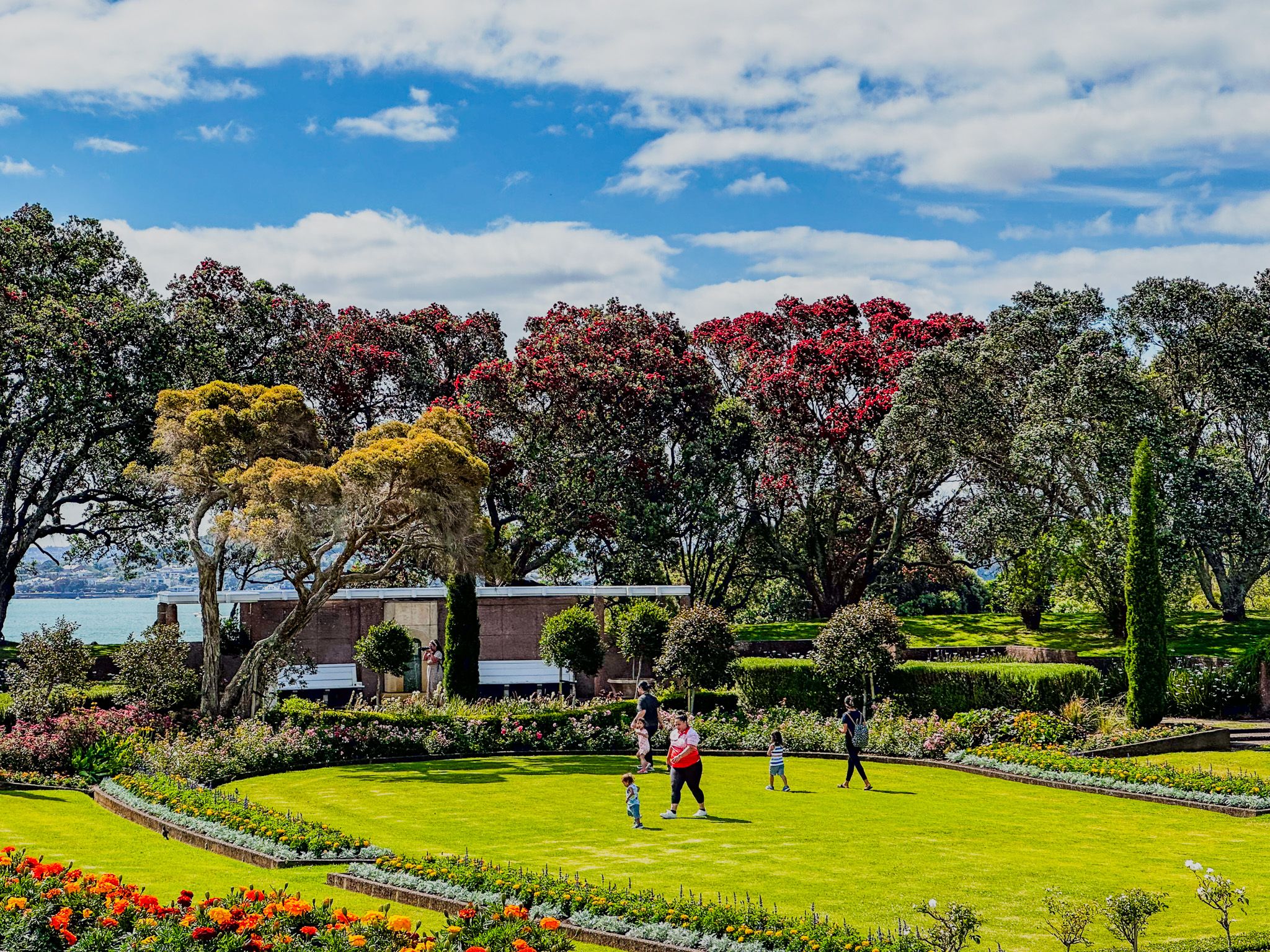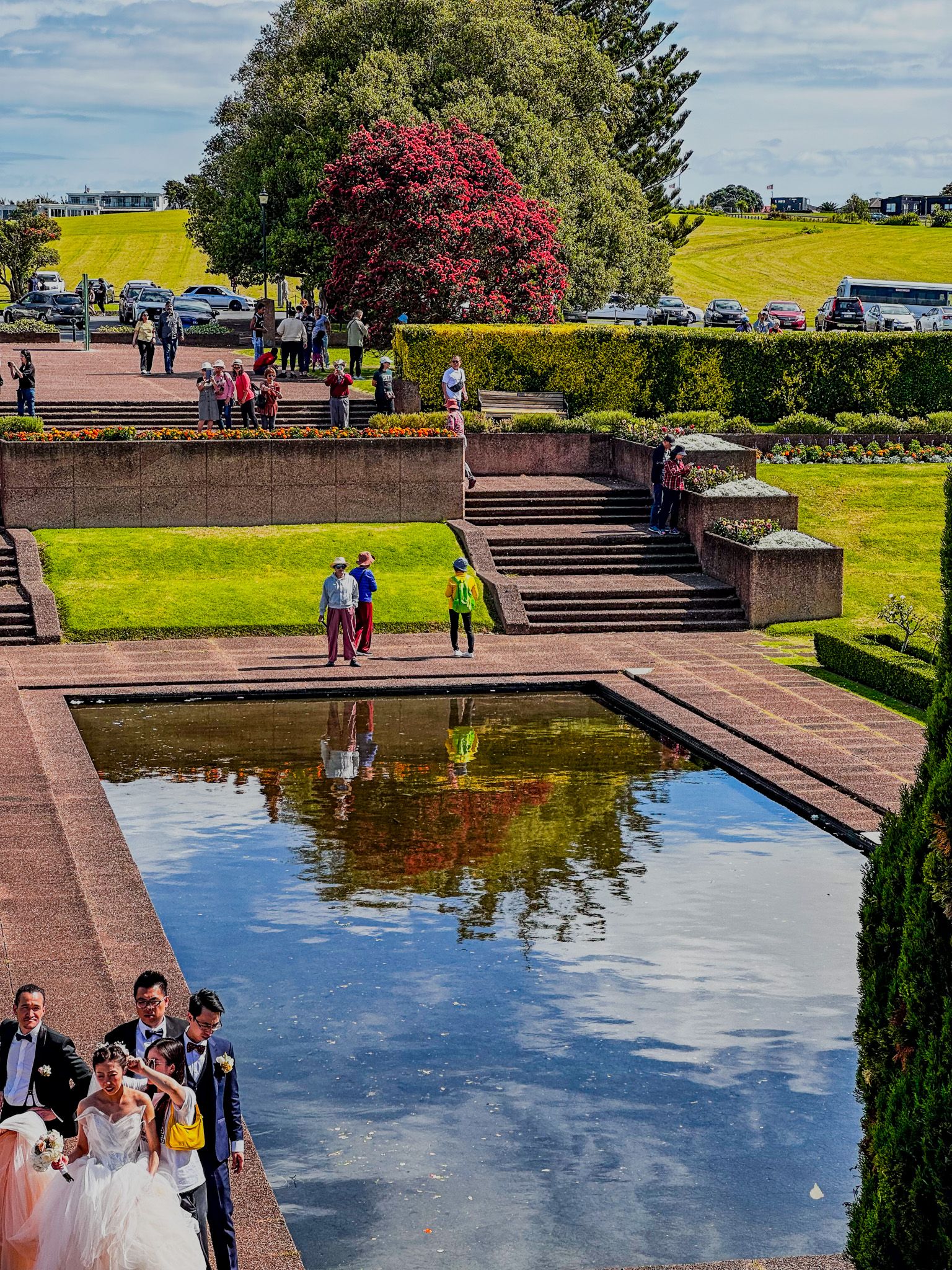Bastion Point is at the western end of Mission Bay. It is fronted by a cliff, with pōhutukawa trees, that overlooks Tamaki Drive, the Watematā Harbour and the east end of Mission Bay in Auckland. It is primarily a grassed reserve at the top but is best known for the extravagant Michael Joseph Savage Memorial. This commemorates a Prime Minister of NZ during the 1930s Great Depression. The road and the primary walking access is on Hapimana Street from Tamaki Drive. You can walk all over the reserve, including Takaparawha Point to the west, which overlooks Okahu Bay.
The point is historically significant for all Aucklanders. Before European settlement, it and Takaparawha Point were a strategic site for defending Māori settlements at the entrance to the Watematā Harbour, with a pā at Takaparawha. After the city's creation, the government took the two points from Ngāti Whātua Ōrakei to support defence works. Fort Bastion was created during the Russian Scare of the 1880s, and improvements were made during WWI and WWII. You can see some old bunkers along the edge of the cliffs to the west of the memorial, and there are several smaller searchlight station bunkers below the cliffs on Tamaki Drive. These defences were supported by underground tunnels and ammunition storage and integrated with the defence facilities near Devonport at Torpedo Bay and Maungauika / North Head. During WWII, further anti-aircraft gun bunkers were built on Takaparawha.
Michael Joseph Savage was one of New Zealand's most famous Prime Ministers. He was the first Labour Party PM of NZ during the recovery from the Great Depression and is recognised as the architect of NZ’s welfare state. He died in office in 1940, and Bastion Point was selected as the location for his memorial tomb. The memorial is extravagant: an Art Deco mausoleum designed by Tibor Donner and Anthony Bartlett with a sunken mirror pool and surrounding gardens. It was opened in March 1943. The views from the north side of the memorial are superb.
The most recent event of historical significance was the occupation of Bastion Point in 1977 by Māori protestors. Originally belonging to the Ngāti Whātua Ōrakei, the point was initially acquired for defence works in the 1880s. Land retained by the iwi in adjacent Ōrakei had been further whittled away by the government for various reasons, often by foul means, up to the 1950s. Then, in the 1970s, the government decided to sell the land around Ōrakei when it should have been offered back to the iwi as no longer being required for public works. Members of the iwi occupied the land for 507 days before being forcefully removed in the media's glare. The protest was pivotal in deciding how the government dealt with breaches of the Treaty of Waitangi. In 1988, the Ngāti Whātua Ōrakei claims were partly settled with the restoration of land at Bastion Point, Takaparawha Point, Okahu Bay and Ōrakei.











